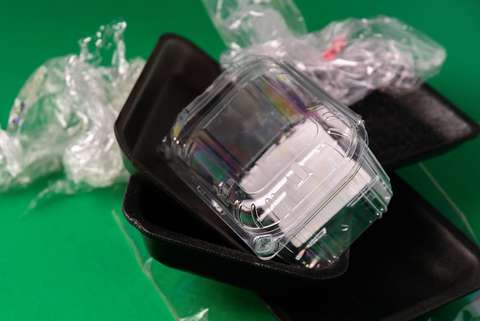Recycling plastics in Espoo more efficiently

In November 2022, the new waste management regulations will bring plastic collection containers to all of Espoo's residential buildings that include at least five households. Finland’s current recycling rate must be doubled by 2025.
“The circulation of plastics and the circular economy are important elements in reaching Espoo’s goal of becoming carbon neutral by 2030,” Project Manager Mia Johansson says.
The Story of Plastic – From Waste to Product project, which is led by Johansson, encouraged and supported Espoo-based schools in collecting plastic packaging for the manufacturing of new recycled products. The project, which ended just recently, will soon continue with the start of the Closed Plastic Circle project. The City of Espoo is responsible for coordinating the joint project that brings together the Uusimaa and Päijät-Häme regions.
“In addition to consumer packing, we want to utilise other plastic streams to ensure that a larger percentage of plastic is recycled into new materials,” Johansson describes.
Less than one-fourth of plastic packaging is reused
Plastic recycling has gotten off to a slow start in Finland, compared many other European countries. According to Johansson, we only recycled 23.7% of non-deposit plastic packages into new materials in 2021.
“Using recycled plastic generates 90% less emissions than producing new plastic materials. We are throwing away up to 95% of the value of a plastic package if we do not recycle it,” Johansson explains.
Despite the benefits, only about 5% of the plastic currently used in Finland has been recycled. In the Helsinki Metropolitan Area, a significant amount of recyclable packaging plastic ends up in mixed waste.
The European Union’s recycling goal has now been recorded in Finnish legislation, and the bar has been set high for plastics. By 2025, 50% of all plastic packaging should be recycled into new plastic products.
“This requires the recycling yield to be improved across all phases from the recycling of packages and their sorting to the production of new plastic of a sufficiently good quality.”
Waste management regulations accelerate recycling
In the Helsinki Metropolitan Area, the recycling rate will be boosted by HSY’s new waste management regulations, which will officially enter into force on 1 November 2022. They oblige every residential property with at least five housing units to organise a separate collection container for plastic packaging. Smaller residential buildings can also order a plastic collection container for their collection point or, alternatively, use public waste collection points. The regulations are also aimed at increasing recycling efficiency for city-owned properties.
“Separate collection must be arranged when a property generates more than 5 kg of plastic waste a week.”
Johansson is very pleased that Espoo’s ambitions with regard to plastic recycling is high. Espoo already signed a Europe-wide Circular Cities Declaration circular economy commitment in 2020. It involves pioneering cities undertaking to use natural resources is a sustainable manner to minimise waste and wastage.
Correspondingly, one of the key focuses of the Sustainable Espoo programme is the concept of a waste-free Espoo. A great deal of effort is also being made to provide recycling education at schools and day care centres, since children and young people are important promoters recycling in homes throughout the region. In addition to this, the intention is to recycle the plastic materials of the growing city’s construction sites much more efficiently.
“Espoo has a good foundation for the efficient reuse of plastics. The volumes are high, and it is easy to organise recycling in densely-populated areas.”
TEXT: Petja Partanen
The Story of Plastic – From Waste to Product is a joint project by the City of Espoo and the LAB University of Applied Sciences, and it has received funding from the Ministry of the Environment’s support programme for the Plastics Roadmap trial and pilot projects. The project started at the beginning of 2021 and continued until the end of September 2022.